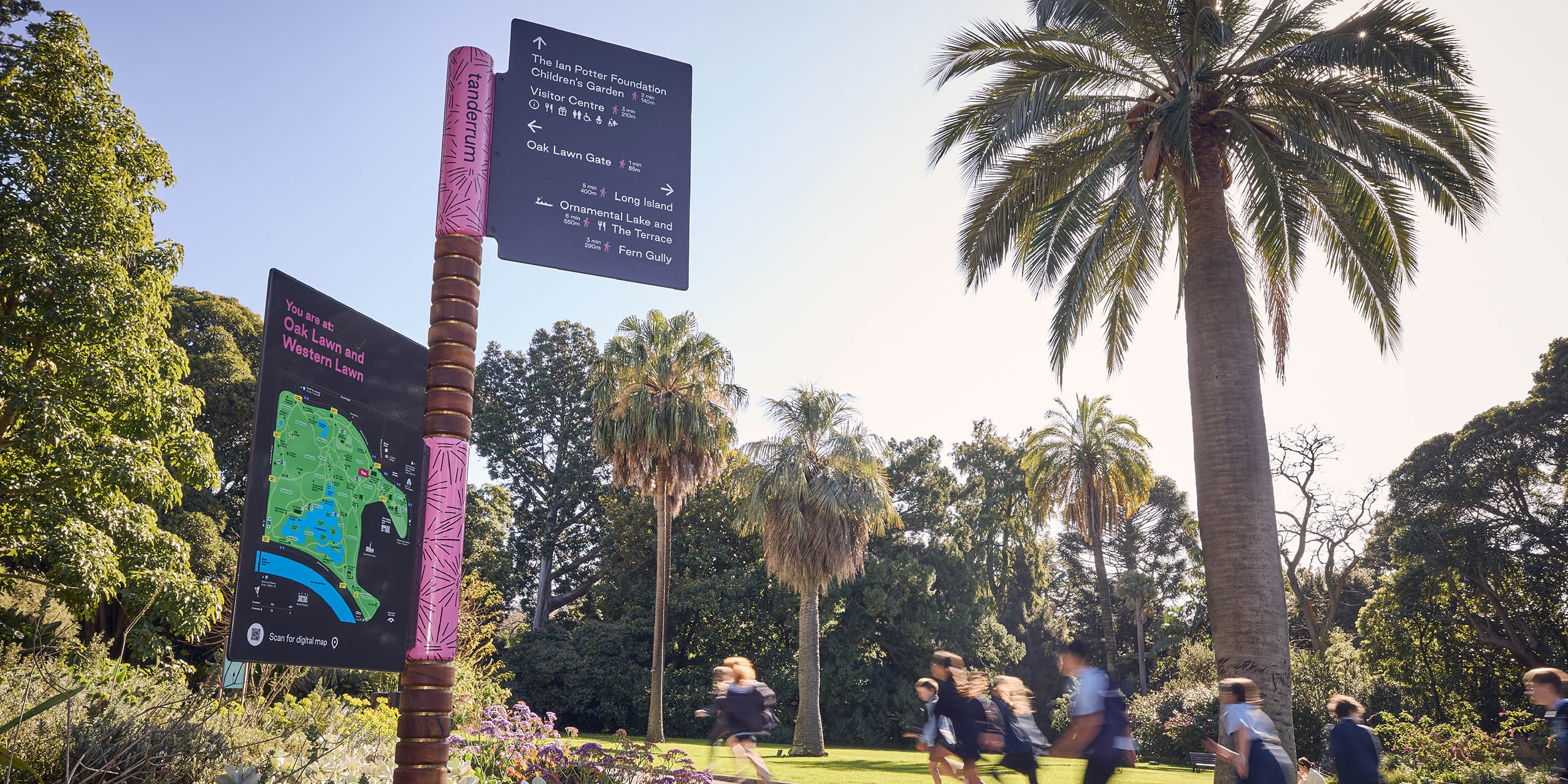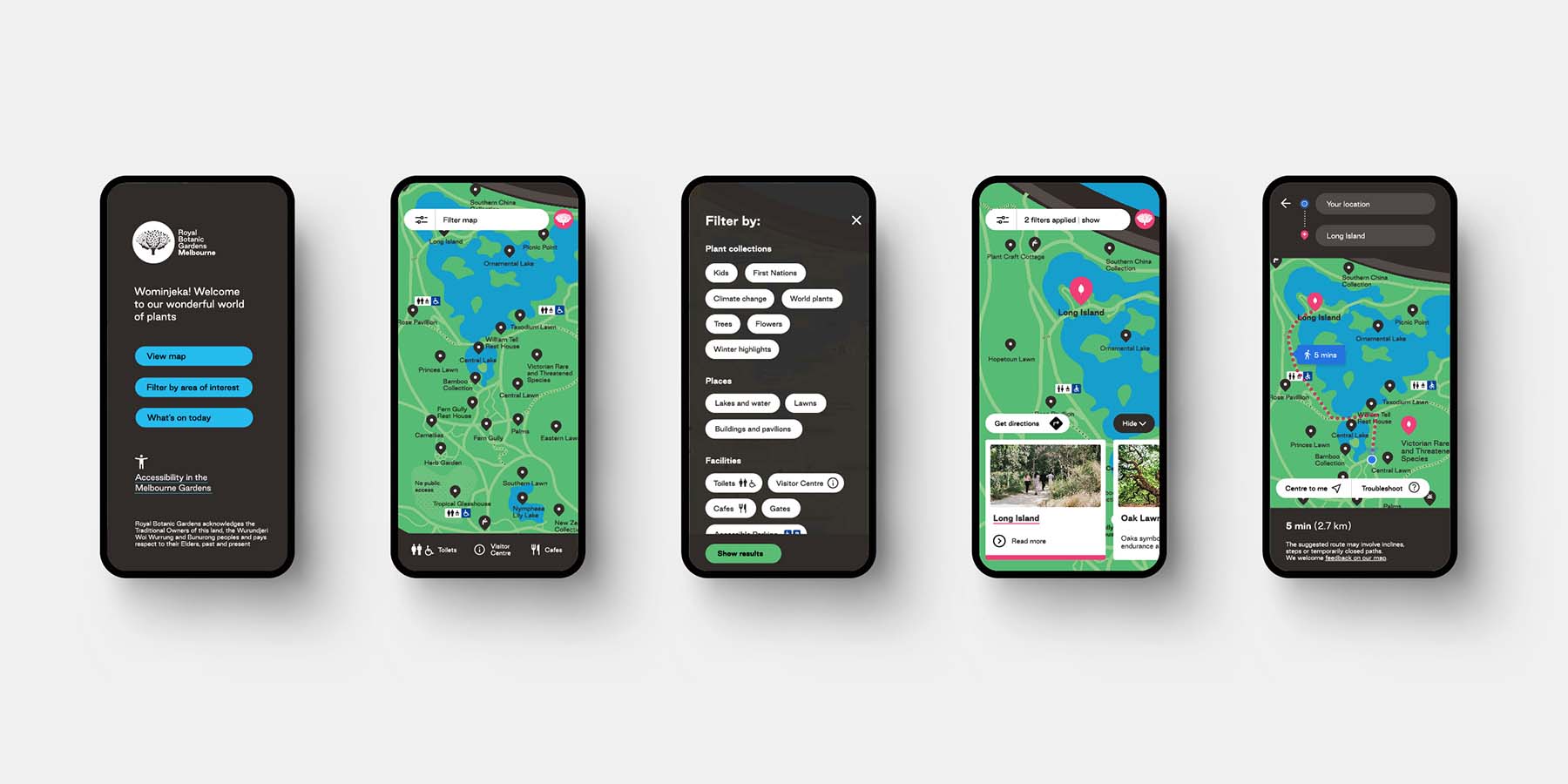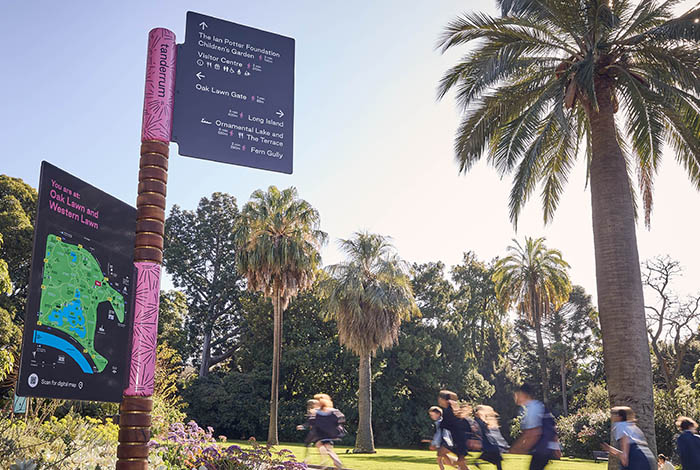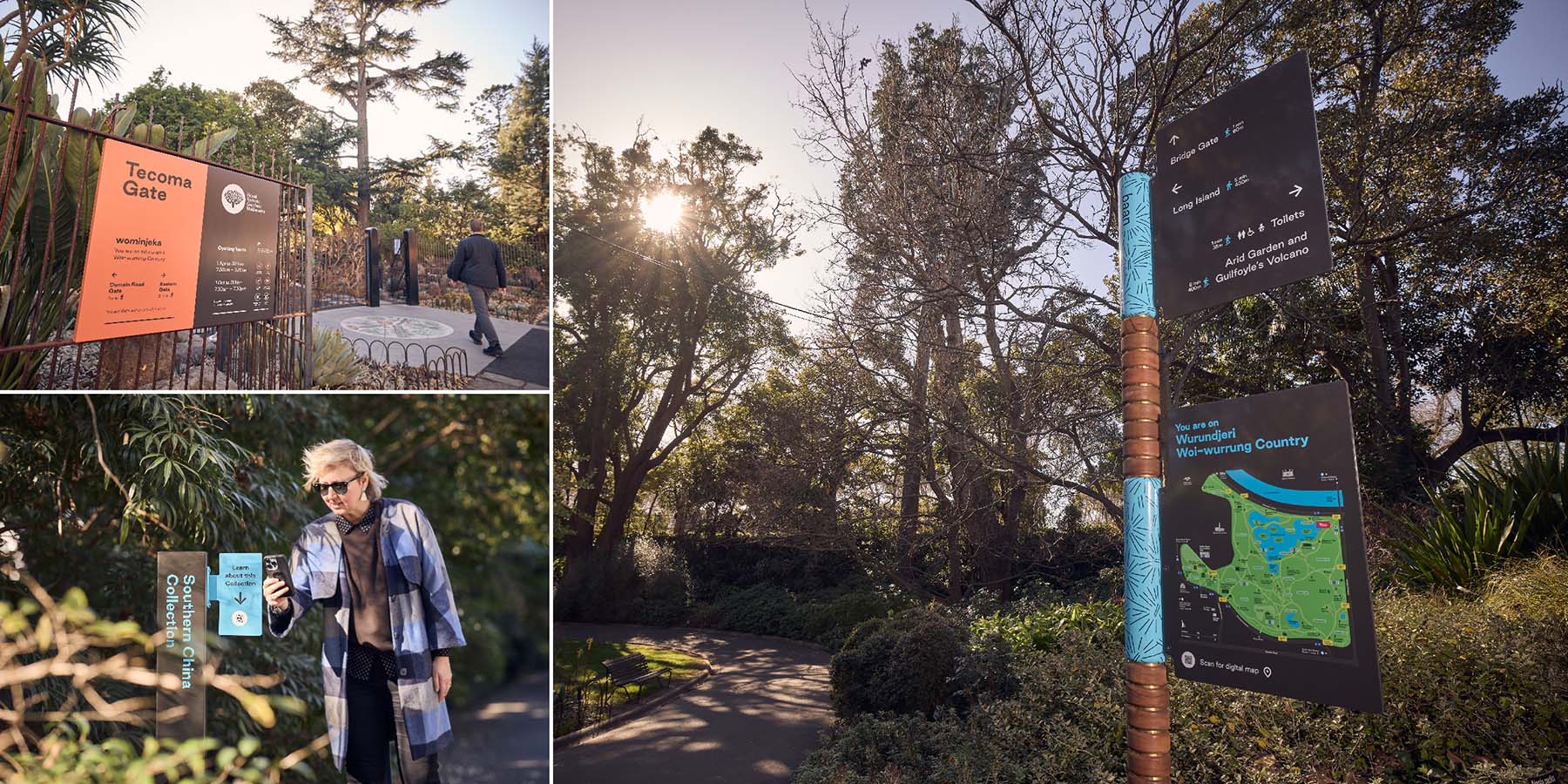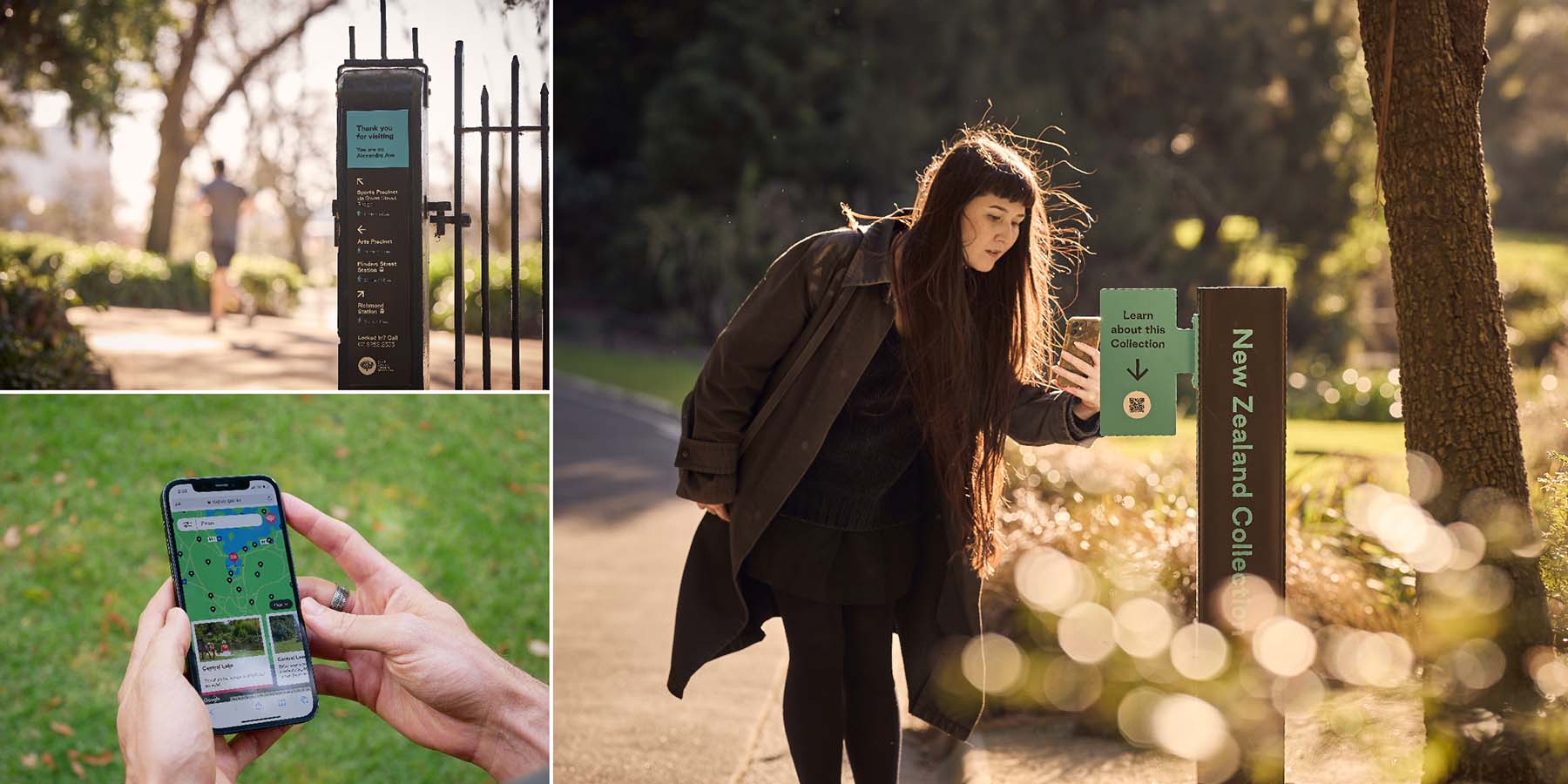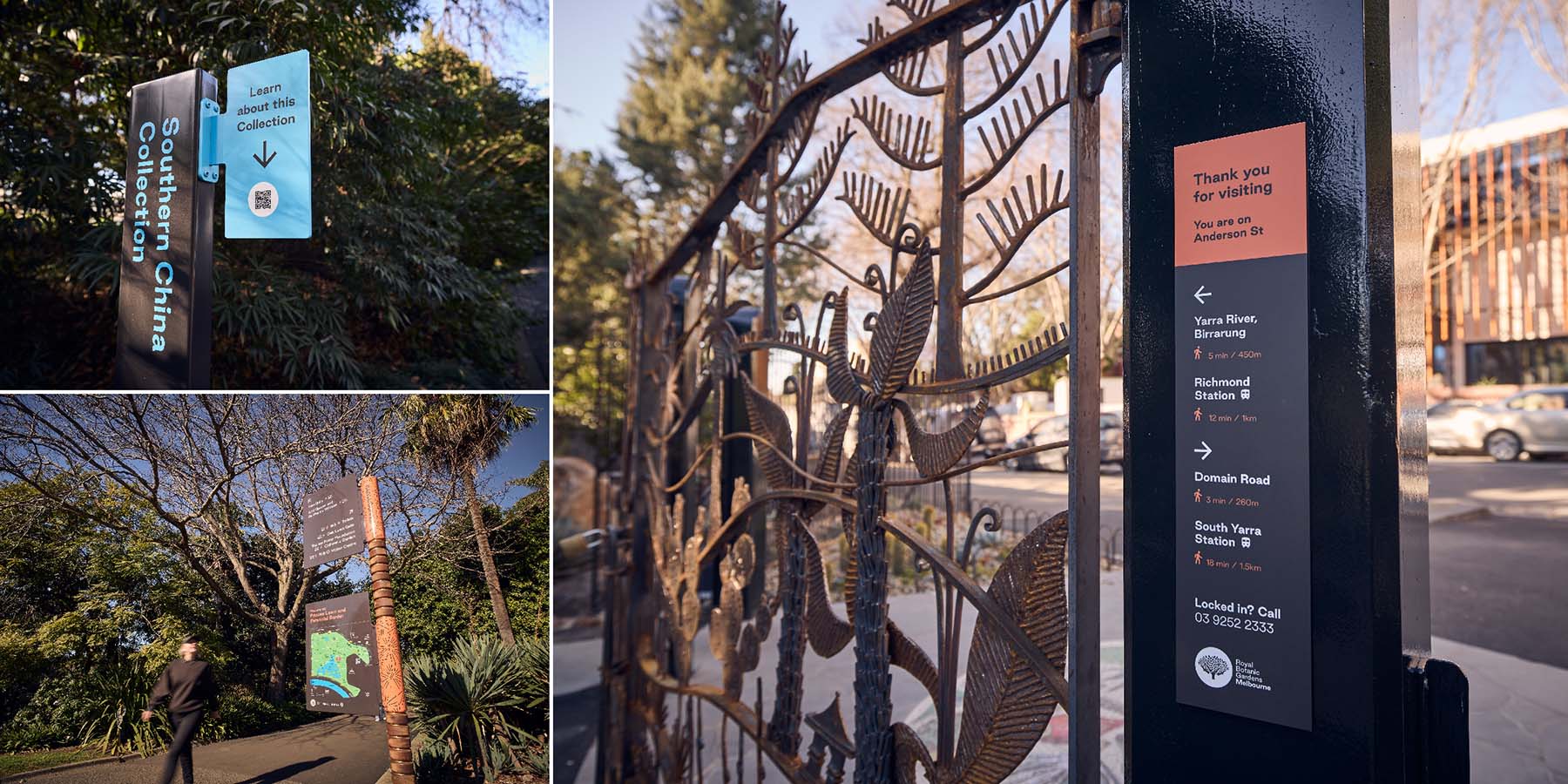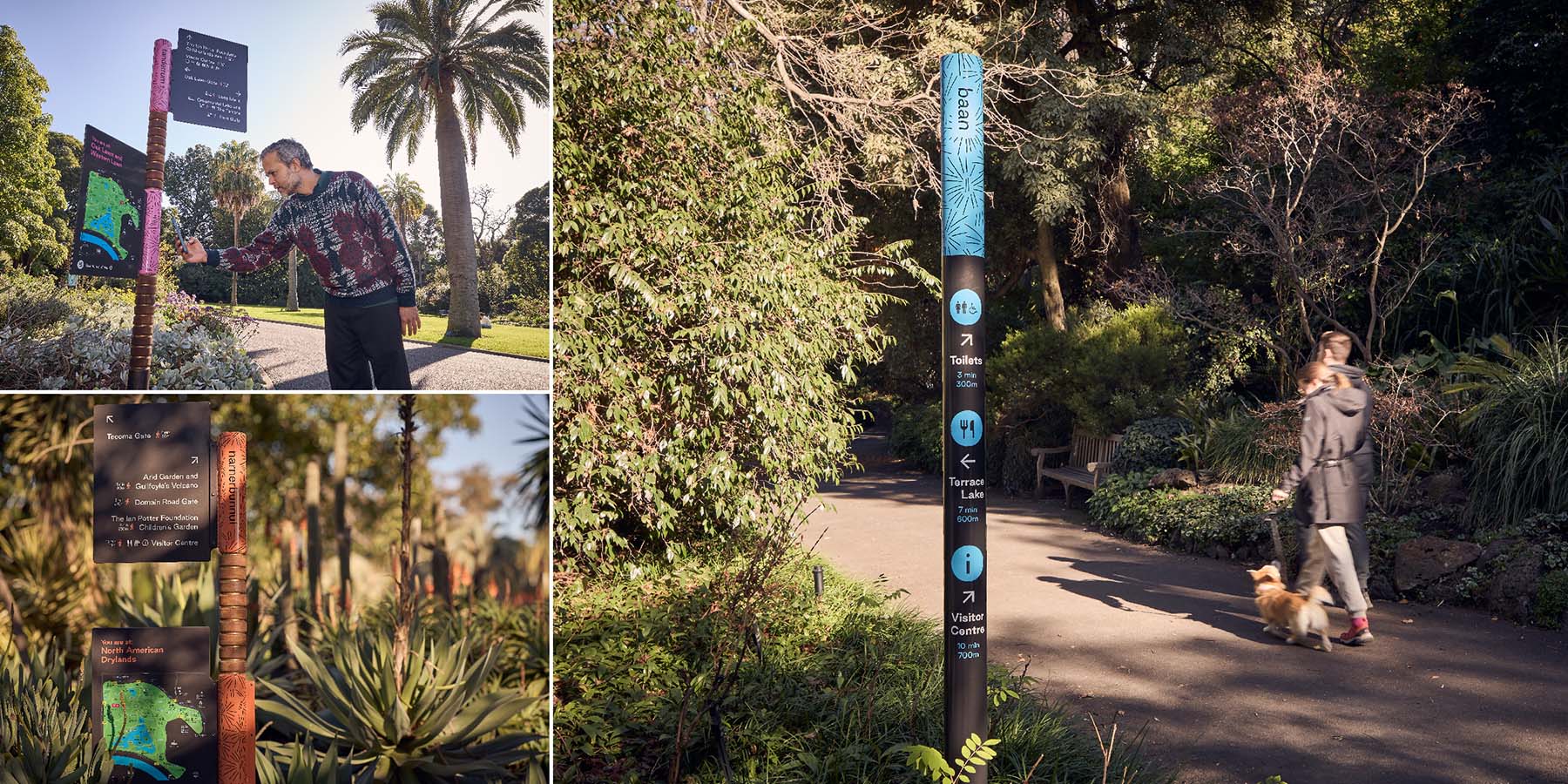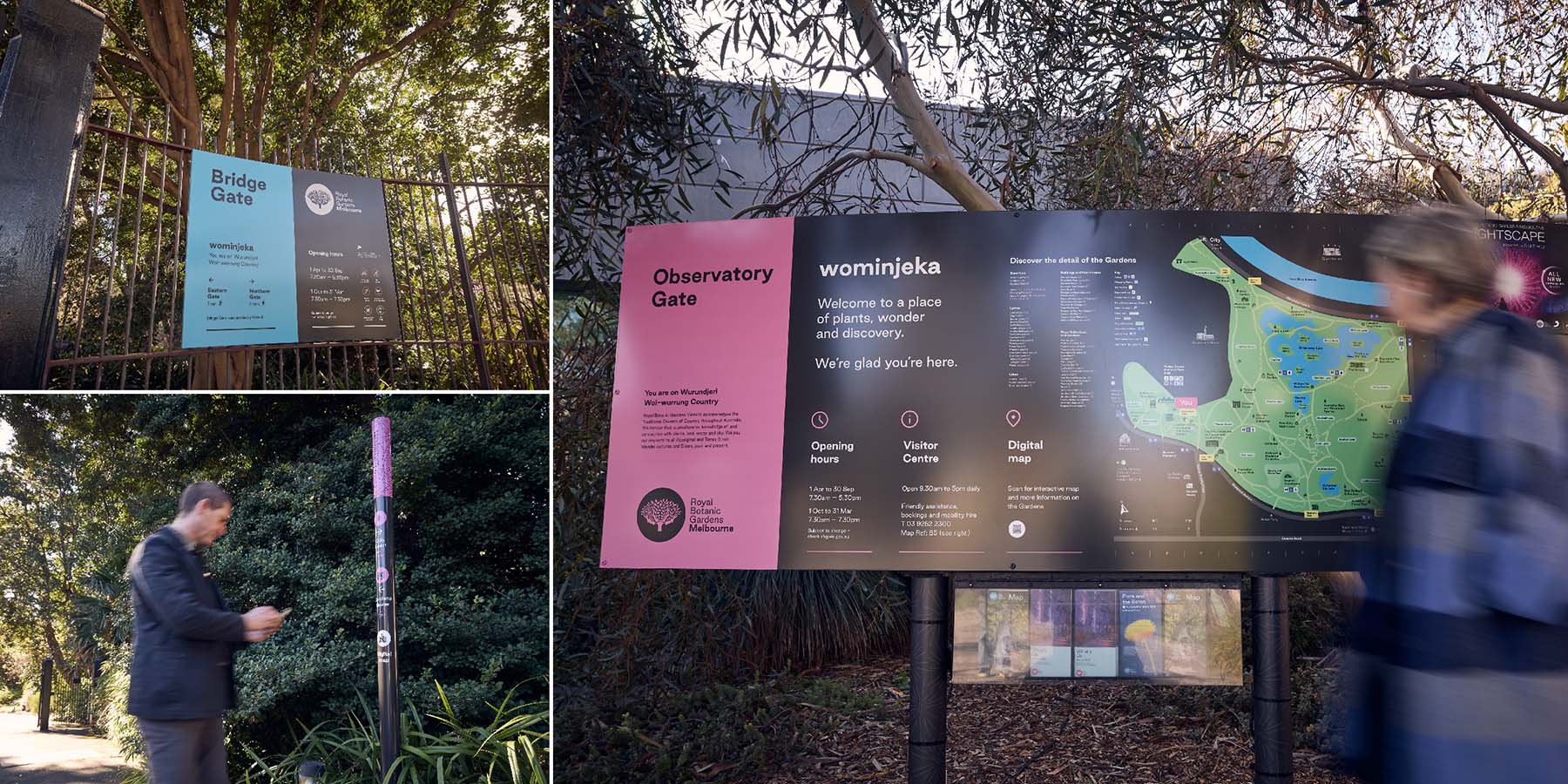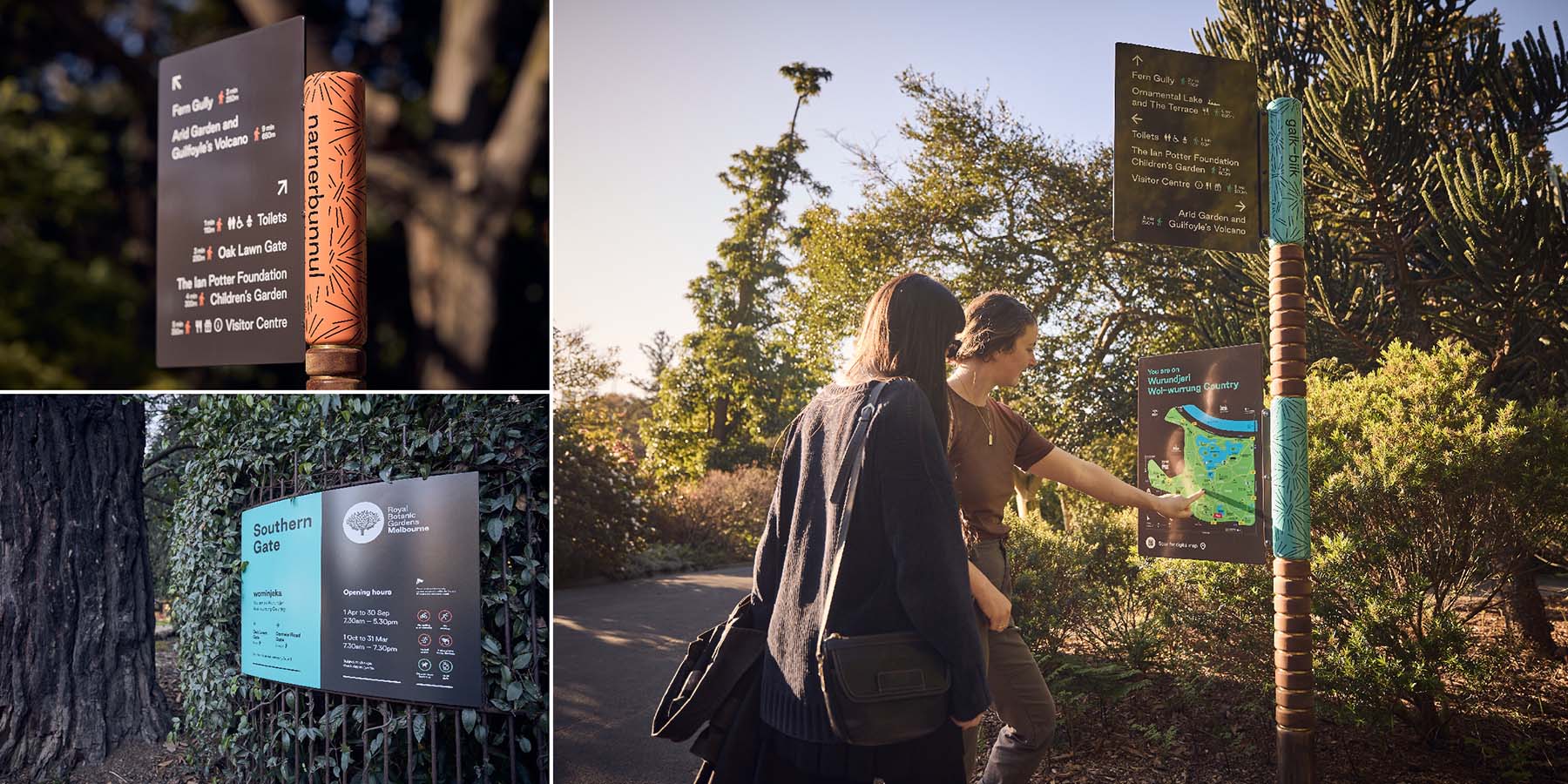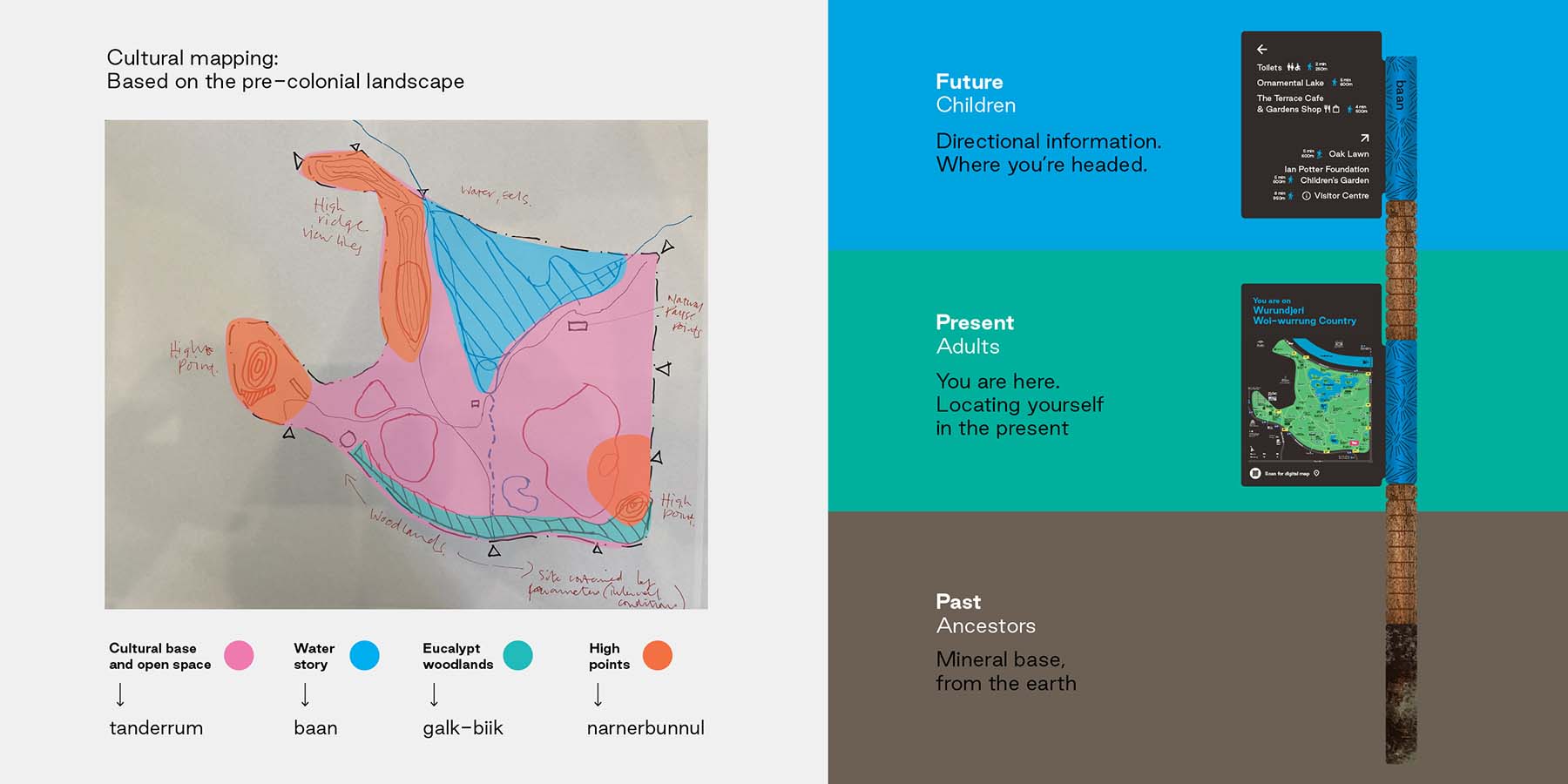The creative team – appointed through an EOI process – included Studio Binocular and Aspect Studios, working with Jefa Greenaway (Wailwan|Kamilaroi + D’harawal) Director of Greenaway Architects, as cultural design lead. Greenshoot Consulting led the Traditional Owner consultation, which also informed the concurrent development of RBGV’s Interpretation and Storytelling Framework with Freeman Ryan Design.
Responding to extensive audits and user research provided by RBGV and Deakin Design, the design team undertook further site visits, consultation and design workshops to help inform the creative concepts.
Three design concepts were presented to a selection panel, and one selected concept was refined through collaboration between the Gardens team, wayfinding and digital design specialists, First Nations design translation, digital developers and Traditional Owners.
In advancing the design, the team adopted an iterative approach across many different platforms:
Physical signage:
Significant prototyping of the physical signs was undertaken – helping to establish a buildable approach for a product which had never been designed or built before. The team worked with fabricators to develop an innovative stacking system, helping to maintain the integrity and durability of materials. Systems were also developed to retrofit existing signage assets.
Digital wayfinding:
Studio Binocular worked to conceptualise the digital wayfinding system, creating user journeys and flows through wireframes, to test the buildability of the digital interface. The team collaborated with the developers of the main RBGV website to ensure full integration with their existing CMS, and began a process of digital prototyping and refinement before undertaking the complex build. Further user testing was undertaken on site to refine the design post-build.
Content development and placement:
Developing the content for a system like this is a complex task, and the team undertook rigorous site walk-throughs and a detailed planning phase to ensure that the right information was delivered at the right time.

